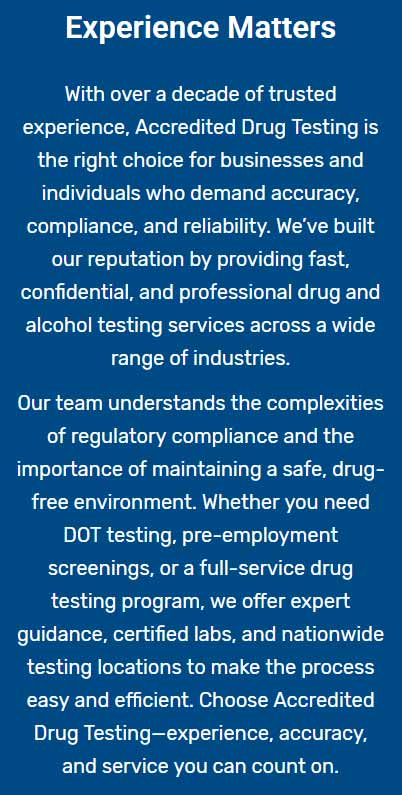Leyden, MA Certified Training
Certified Training Available in Leyden, Massachusetts
For those pursuing in-depth DOT oral fluid collector training, our program is precisely structured to impart the skills and expertise vital for asserting yourself as a certified oral fluid collection expert. Given the Department of Transportation's (DOT) stringent adherence to precision and professionalism, completing an accredited DOT oral fluid collection training course is indispensable for any individual stepping into this profession.
Successfully passing a DOT oral fluid collector training program doesn’t merely amplify your credentials but also breaks open new professional avenues. Certified oral fluid collectors are crucial assets in industries mandating DOT-aligned drug testing provisions. By excelling in oral fluid collection, you achieve a significantly competitive stance in an ever-expanding field.
Accredited Drug Testing takes pride in standing among the initial group certified to coach DOT oral fluid collectors and to assess their proficiency via mock demonstrations for DOT qualification. As one of America’s premier providers in DOT drug and alcohol testing, in addition to DOT drug and alcohol educational modules, we present four distinct training methodologies to secure qualification as a DOT oral fluid specimen collector. Accredited Drug Testing holds the endorsement from the National Drug & Alcohol Screening Association (NDASA).
For encompassing insight into our educational offerings, additional services, or scheduling a drug or alcohol test across the Nation, dial (800)221-4291 or navigate to our main page. ** Accredited Drug Testing’s suite of virtual educational sessions are formulated in partnership with the National Drug and Alcohol Screening Association.
Our courses contain most or all of the following:
Library of terms & resources
Lessons
Short quizzes & final examination
Mock collections
Universal skill set
DOT Qualification
Professional Certification
Regulated by local, state and federal authorities
Multiple industries
Public sector
Private sector
Signature




